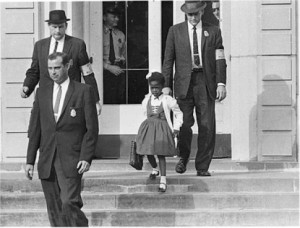
Time To Transform Public Schools: Part 1 – Brown v Board, An Incomplete Journey
On May 17, 1954 the Supreme Court declared state laws establishing separate public schools for black and white students unconstitutional, ruling that “separate educational facilities are inherently unequal.” That was three years before I was born and it shaped my life and the generations to follow. As an African American woman who attended public schools, had a career in the technology and education fields, and has four children in the public education system, I wanted to take this time to reflect on how this important Supreme Court decision impacted African Americans in our public education system to date.
Prior to the ruling, the majority of black students across the nation (particularly in the South and Midwest) attended schools in their community which were run and taught by black teachers. The facilities were in shambles, text books were not on par with the white schools, the pay for staff was less and they received less from the local governments. Many graduates from these black schools went on to attend black universities and run businesses in their community, while others secured jobs in less segregated areas of the country.

Six year old Ruby Bridges is escorted by federal marshals in 1960.
Just like every other law allowing blacks to partake in American life, many whites were not willing to comply with the law and progress was slow. As black students began to integrate schools, they endured a great deal of mental and physical abuse. In order to avoid compliance with the law, some white schools went to the extreme and chose to close down rather than integrate. Some white schools required black students to take an entrance exam to see if they could handle the “rigor” of being in a white school. In 1960, Ruby Bridges took such a test, passed and at the age of six was eligible to attend a white school that was five blocks from her home instead of the black school she had to travel several miles to attend. On her first day in her new school, Ruby was escorted to school by federal marshals while she endured racist taunts and threats. I often put this into context for my own children by reminding them I was three years old at the time Ruby Bridges had to be protected by federal marshals just so she could attend her neighborhood school.
Ruby’s is but one story. There are a myriad of stories about the early days of school desegregation. In the decades since, what we all came to realize was integration does not necessarily mean opportunity and it certainly does not mean equality.
The System Was Not Made For All Students
I want us all to take a moment to reflect on this. Are we naïve enough to believe it was only the white parents and citizens who didn’t want black students in their school and the administration running the white schools welcomed the black students with open arms? I don’t think so. Many teachers did not believe the black students belonged, they did not believe the students had the aptitude, and the teachers’ behavior reflected this belief. Black students were faced with low expectations, endured verbal abuse and were disciplined more often and more harshly by teachers. Imagine how difficult it is to be at your best in such a situation. Of course there were exceptions, but by and large the black experience in integrated public schools was not productive.
The public education system never properly prepared for integration—not in 1954 and not today and it still lags behind in providing equal education to our most vulnerable. For decades, black and other minority students have been failed by the system. After decades of integrating schools—either by force or by changes in housing policies—we continue to face the same problems of belief and behavior, but today I believe it is more about lack of exposure to, and relationships with, black families (and other families of color) than racism.
We have come a long way in race relations in terms of opportunity, but the data clearly shows we continue to lag behind in our public education system—the entity that shapes lives of 90% of the children in our country. The No Child Left Behind act helped shed light on the issue, but failed to really deal with the causes and instead focused more on standardized tests. Which begs the question: “Why is the right to a high quality education still filled with barriers and hurdles?” My answer to this question is this: as a country, we are unwilling to deal with the real changes that are needed—changes in the belief, attitude and behavior of the adults in the system, as well as the structure of the system itself.
Public Education in Washington State
From this point on, I will address the education system in Washington State only, as it is the system I have the most intimate knowledge of, personal experience with and a professional investment in, but I suspect this will sound familiar to some of you regardless of what state you or your children were educated in.
Let’s start with the leadership in our education system in which 80% – 95% of positions from the top leadership in districts, to the head of schools, to the classroom teachers are primarily held by white adults. Race matters when it comes to teaching. Lessons are easier to learn when you can relate to what is taught, how it is taught and who teaches. Similarly, content has to be culturally relevant for students. Teachers also are the primary gatekeepers to a guild or field of study. Teachers don’t dispense skills as much as they usher future apprentices into a particular academic discipline. In this regard, culture matters.[1] Our most diverse districts enroll on average 65% students of color (with some schools as high as 80%). This combination of low percentage of adults of color and high percentage of students of color presents challenges to teaching and learning that manifests itself in many ways such as, high suspension/expulsion rates for black students, moving black students to special education programs in alarming rates, low expectations, low enrollment of black students in advanced classes, black students not seeing themselves in any curricular content, black students feeling their teacher doesn’t understand them or care about them, etc.
This is not to say district and school leaders haven’t tried to make things better for kids of color in their schools. Unfortunately in many cases they do the easy things that have little to no impact. For example: millions of dollars have been spent on sending teachers to cultural competency workshops, yet there is very little change in their beliefs or behavior. Bringing in new curricular materials, changing standards, hiring the token person of color to handle community relations for the entire district are other efforts that haven’t worked either.
Frankly the entire structure of public education is broken. It is setup for the convenience of the adults and not for the true education of the students. Thousands of kids are crammed into schools and treated as if they are generic entities who all work and learn the same. Kids are managed instead of developed. Policies and practices are applied regardless of whether they are actually good for the students involved.
We can and should do better!
One would think an ideal situation is one where all students have access to equally well funded public schools regardless of community wealth or poverty. But there is more to it than being well funded. Teachers and administrators should build authentic relationships with students, their families and each other to create a learning community within the school where kids and adults feel respected and supported; that is what works. That is the direction we should be going. It is not a “drive by” solution. It is an investment (financial, human resources and time) that we, so far, have not been willing to make.
There is at least one example in Washington State where that focus and intentionality is happening—TAF Academy—a small neighborhood school that is socioeconomically and academically balanced, has a high percentage (43%) of teachers of color and places high value on community. It is a unique school—started as a partnership between Federal Way Public School and TAF—that is ready to lead the way in how school should work for students.
TAF Academy is a STEM school rooted in a culture of equity, authentic learning, academic achievement and college readiness. Learning is designed for and often by the students, teachers collaborate as part of their daily practice and learn alongside their students, parents are welcome in the classrooms at any time, and professionals in other fields participate in teaching and learning. There is a bond of caring at the school between all the groups—teachers, students, and support staff—where people look out for each other and students support each other to do their very best.
Over the next few months I will be writing in more detail about how we can rethink our school system, what it takes to get there (it isn’t cheap and doesn’t happen in a blink of an eye either), and how we can all be a part of the work.
Let’s come together and make this law work the way the framers of Brown v The Board of Education intended it to!
Click here to read part 2 in the series.
[1] NewsOne.com May 12, 2014. Brown v Board of Education’s Uncertain Legacy on Teacher Diversity By Andre M. Perry, Ph.D






Could be subtitled “TAF is about more than STEM”.
That is a very good point Sally! We have evolved for sure. Thanks for taking the time to read this piece. I hope you will follow the series.
-Trish
Thank you for starting the conversation. Time and the civil right movement fever has forced the system to change. I think we are at that juncture now. It is time, we can’t wait any longer, our children have to have the opportunity to be prepared for the 21st century. If not there will be more suffering for them and for us. We, parents, black communities have to look into this issue and believe that we have the power to change it,and engage to bring the change we want.
Many parents are talking about, there is a clear understanding that the system is failing our children. Recently, I had the opportunity of participating in a couple of meetings at Africa Town. Many people had great ideas and are willing to do the work needed to bring changes. I hope they are on your contact list. I will also pass it to the ones I know.
I am so proud of your work and where TAF is today. My daughters, Charlie and Esinthia are a testament to the work of TAF. Thank you for your vision.
Metti
Metti
I know your focus is on education in this series. As a background, I thought your readers may find it of interest that segregation, often associated with the US south, was also strongly entrenched in Seattle. While not enforced by law, the practice still was widespread. (It was technically illegal to discriminate based on race, but the law was rarely enforced.) Here are some examples:
– Hospitals (including Swedish, Providence, and Virginia Mason) still refused to treat African Americans and any Asian Americans as late as the end of WWII
– Stores in Seattle still posted “Whites Only” signs as late as the 1950s
– The first African Americans to work at Boeing didn’t get hired until the 1960s
– Many neighborhoods had race restrictive covenants (and some may still have some not yet removed)
– Some neighborhoods had “sunset laws” until the mid-1960s, notably Queen Anne, Magnolia, and the east side neighborhoods
– Because the neighborhoods were segregated, so were the schools: in 1966 Seattle had nine “black schools” in the Central District and nearly 100 “white schools” throughout other parts of the city
– segregation and race restrictive covenants included African Americans, Asian Americans, Filipino Americans, Native Americans, Jews and other groups
– Seattle African American residents did have more local rights than their southern counterparts
– Effects in housing and education are not yet eradicated
Yes, Seattle has come a long way. Yes, the state and its educational opportunities for all students still has a ways to go.
Thanks for such an accurate and well stated position on our public schools today! We’re proud to have been TAF’s landlord on 23rd Ave. S when TAF first started out years ago. Your great work with educating our youth and TAF as an organization have come such a long way! The nonsense coming from up Los Angeles basketball emphasizes this so clearly. Keep up the great work for our Community! Rich Wagner
“Kids are managed instead of developed. Policies and practices are applied regardless of whether they are actually good for the students involved.”
I believe this to be true as well. I believe students are being used to experiment with new models that have no grounding in research nor are proven to be developmentally appropriate. Kids aren’t widgets.
The question I always come back to is this: what is the purpose of public education? Do children learn only to get jobs? That’s an important focus to be sure but what about as thinking citizens?
It’s as my friend, the late great UW computer science professor, David Notkin, would say: do you want your kids to have sex education or sex training? Meaning, education is broader than training.
“This combination of low percentage of adults of color and high percentage of students of color presents challenges to teaching and learning that manifests itself in many ways such as, high suspension/expulsion rates for black students, moving black students to special education programs in alarming rates, low expectations, low enrollment of black students in advanced classes, black students not seeing themselves in any curricular content, black students feeling their teacher doesn’t understand them or care about them, etc.”
I hope you might address this in detail especially the why. Why suspend these kids at such high rates (wouldn’t that tell an educator/administrator that maybe they need to change if it’s that many kids)? Why enroll them at such high rates in Special Ed? Why do students not feel understood or cared for – how does that manifest itself?
Keep up the good work. It helps us all to learn more.
As a parent of a TAF Academy student I appreciate you starting this school. It has been such a enriching experience for my daughter. I have made it a point to tell my children the story of Ruby Bridges so that they never take for granted about being able to get a education. Thank you for writing this.
Thank you Trish for your passion and articulating the need for public education reform. TAF has proven that putting resources where they are NEEDED impacts the trajectory of students of color.
My son has attended three schools in the last three years, and I am constantly adjusting expectations with teachers, faculty, staff. What is most concerning is that when I bring up the topic of cultural competency, the conversation stops because there are few that have the courage to continue the conversation.
I will continue to support, advocate and impact legislation that will invest in the education of young minds. Continue the fight for justice.
Hi Trish and TAF supporters!
After reading this article I felt compelled to share with you all a story about my friend, Ty Edwards. His inspiring personal testimony clearly shows that we still have a long way to go to reaching educational equality.
“Freshman year in high school, I was enrolled in advanced English, and the teacher asked me three times, “are you sure you’re in the right class?” I was brought outside of class during a “check-in” discussion with my calculus teacher, and asked, “why are you trying so hard?” I told her because I want to go to college, I want to be the first in my family, I want to bring change. She told me, and I quote, “you should think about working a factory job, 92 percent of African American males don’t graduate college, and rarely graduate high school around here”. My Chemistry teacher Mr. Brady, told me, “you’re not like the rest of them”, and then gave me an analogy of a rare black flower that grows within the bunch; kind of like the black sheep, but that it soon dies amongst the flock. He told me I should consider working at the local ice cream factory Haagen Daaz, because its hard to make it in college when your from a poor community. I remember going to my counselor my freshmen year, and breaking down in tears, because I couldn’t understand why teachers would say such things when I was acing their classes. To my surprise, the counselor sided with them, and told me, “I would hate for you to push yourself so hard, and have these high goals, and later realize they are not attainable for someone from your community”. I spent that year working harder than I ever had. I tossed, and turned late at night on a regular basis to block the negative thoughts of the feedback I received from my teachers. No matter how hard I worked, or how great of a grade, I always knew what they thought of me as I walked to the front of the room to place my assignments on their desk. But today, I’d like to thank them. They gave me the fuel to persevere through the drought. Their words gave me the strength to make something out of nothing; to turn that picture of hopelessness into hope. Don’t let anyone ever tell you what you are capable to do.”
Today, Ty is a Fulbright scholar, attending the University of British Columbia.